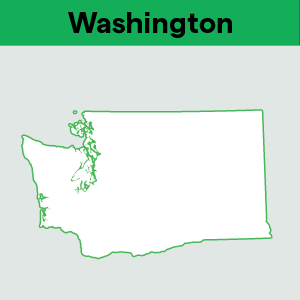New age dilemma: tax digital goods
by January 23, 2025
This guest post is from Kevin Permenter, a Research Manager with IDC’s Enterprise Applications team.
The selling of digital goods and services are set to redefine the way the global economy works. As a result of the massive shift toward digitalization, the amount of non-physical digital goods (i.e. on-demand services, software, online gaming, e-books, music files, digital images, etc.) being sold has exploded. This explosion has caught the attention of business owners and tax authorities all over the globe. The U.S. sales and use tax system is already considered one of the most complex on the planet. This complexity emanates from the following factors:
- Changing tax rates: The tax rates within the United States are constantly changing at both the state and the local level.
- Shifting jurisdictions: Within each state, each jurisdiction has a unique set of rates and characteristics that makes maintaining compliance more difficult.
- Evolving requirements for tax compliance: In their quest to collect revenue from remote sales (ecommerce), states have created a confusing patchwork of requirements on out-of-state sellers based on varying definitions of “nexus”.
This issue of complexity reaches new heights when dealing with digital goods and services at the state level. The definitions and terms are not universal from state to state, there is no uniformity on how to classify some digital services, and there are issues around the use intent (i.e. permanent use or non-permanent use). Lastly, business owners must cope with this confusion while knowing that the current situation may very well be completely different a year from now. The situation is rapidly evolving on a state-by-state basis which places incredible pressure on business owners to stay informed.
A path forward
As always, the heaviest part of the burden from these new regulations on digital goods and services will fall on the SMB digital commerce retailers where tax management resources (e.g. time, money, people) are more limited. IDC believes that this burden places a heavy focus on affordable, cloud-based tax compliance software in the coming months, especially among smaller digital retailers. Here are a few things to look for when choosing a tax solution for the digital economy:
- Bring on the innovation: Companies looking for sales and use tax software vendors must strongly consider vendors that are utilizing technology advances like machine learning and artificial intelligence to support the sales tax functions including the collection and analysis of relevant data to expose possible areas of risk/exposure.
- Training and Education: The tax regulatory sands are constantly shifting for corporate tax professionals. Consider looking for sales and use tax software providers that offer training and education in the form of regular videos and white papers. In addition, look for software vendors with education portals where customers can find the latest tax regulatory information.
- Move to the cloud: The rapidly changing tax rates and the pace of digital business almost necessitate the use of cloud computing when calculating and collecting sales and use taxes. Companies looking for sales and use tax software need to strongly consider cloud-based solutions.
Many tax software vendors have invested a tremendous amount of resources in enhancing/launching products that address the taxation of digital goods and services. Many of them offer dedicated initiatives to provide tools and education for business owners as they navigate the digital goods and services taxation landscape as it continues to evolve. For example, TaxJar has made major investments in providing guidance, and tools for today’s digital business owner. These investments include:
- One of the most difficult parts about sales tax compliance is ensuring businesses are collecting and remitting the right amount of sales tax on each of the products they sell. TaxJar’s artificially intelligent sales tax categorization robot takes all the work out of collecting and remitting the right amount of sales tax by evaluating products and intelligently suggesting the right product tax code.
- Knowing where businesses currently have and where they’re approaching nexus is critical. TaxJar’s Economic Nexus Insights takes the onus off of businesses having to guess where they have and where they’re approaching nexus – making it possible to correctly collect sales tax, register ahead of time and be compliant.
- Keeping up with filing due dates can be challenging. TaxJar AutoFile automatically submits returns to the states where businesses are registered and ensures they never miss a due date.
- Getting up and running fast with a sales tax solution is paramount to staying on top of the business. TaxJar’s customer success team provides dedicated go-live and technical onboarding, support, and resources including a centralized portal to track go-live project timelines, deliverables and communication, knowledge base articles and a new on-demand training curriculum.
Conclusion
The taxation of digital goods and services is currently still evolving and becoming even more complex. Both sellers and consumers of digital goods must work to understand their exposure to related taxes. It will be an uphill battle for companies who choose to cope with digital goods taxation via legacy approaches. It will be the companies that understand the importance of a modern tax compliance solution that will not simply cope with upcoming changes; they will thrive.








